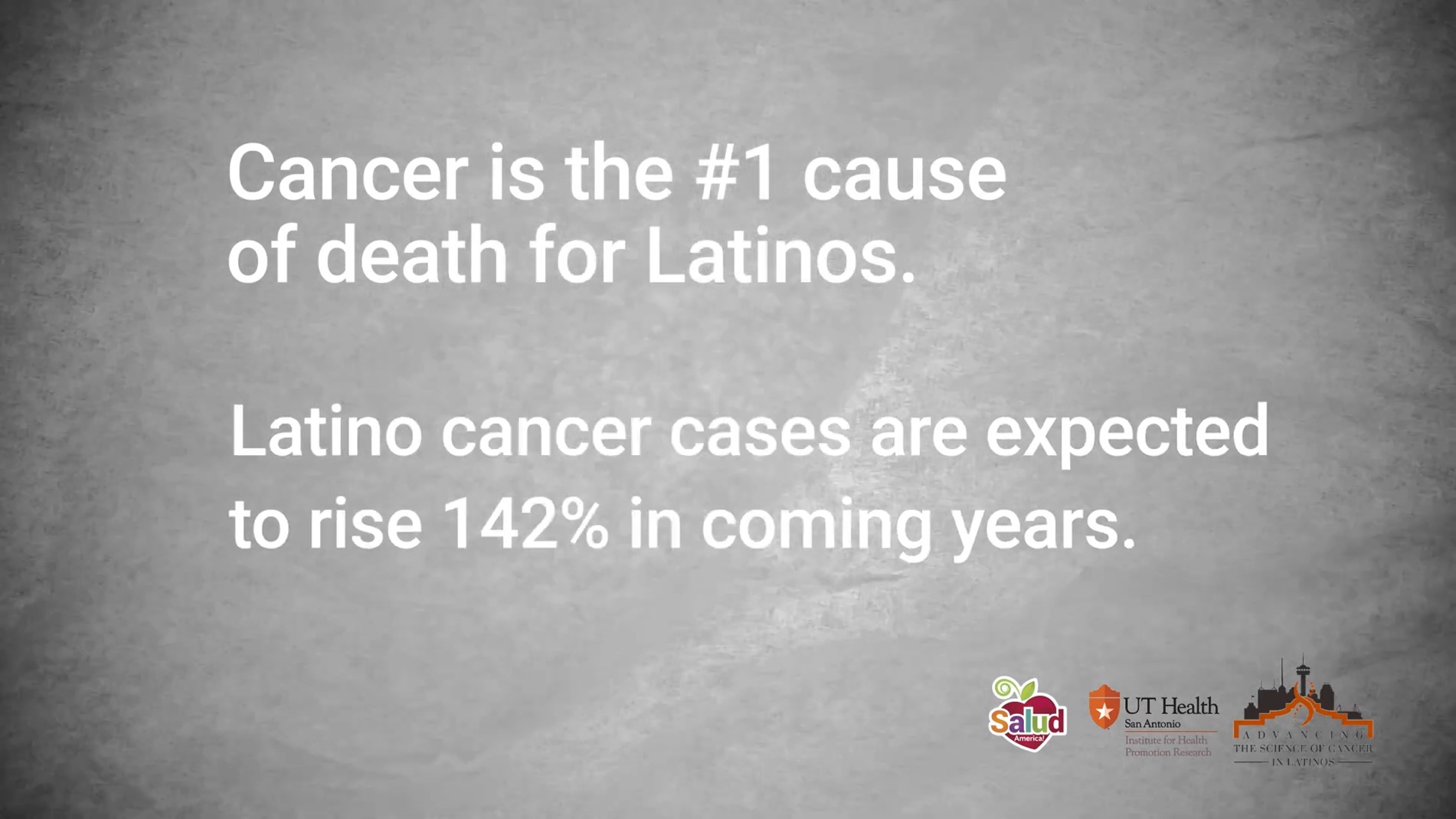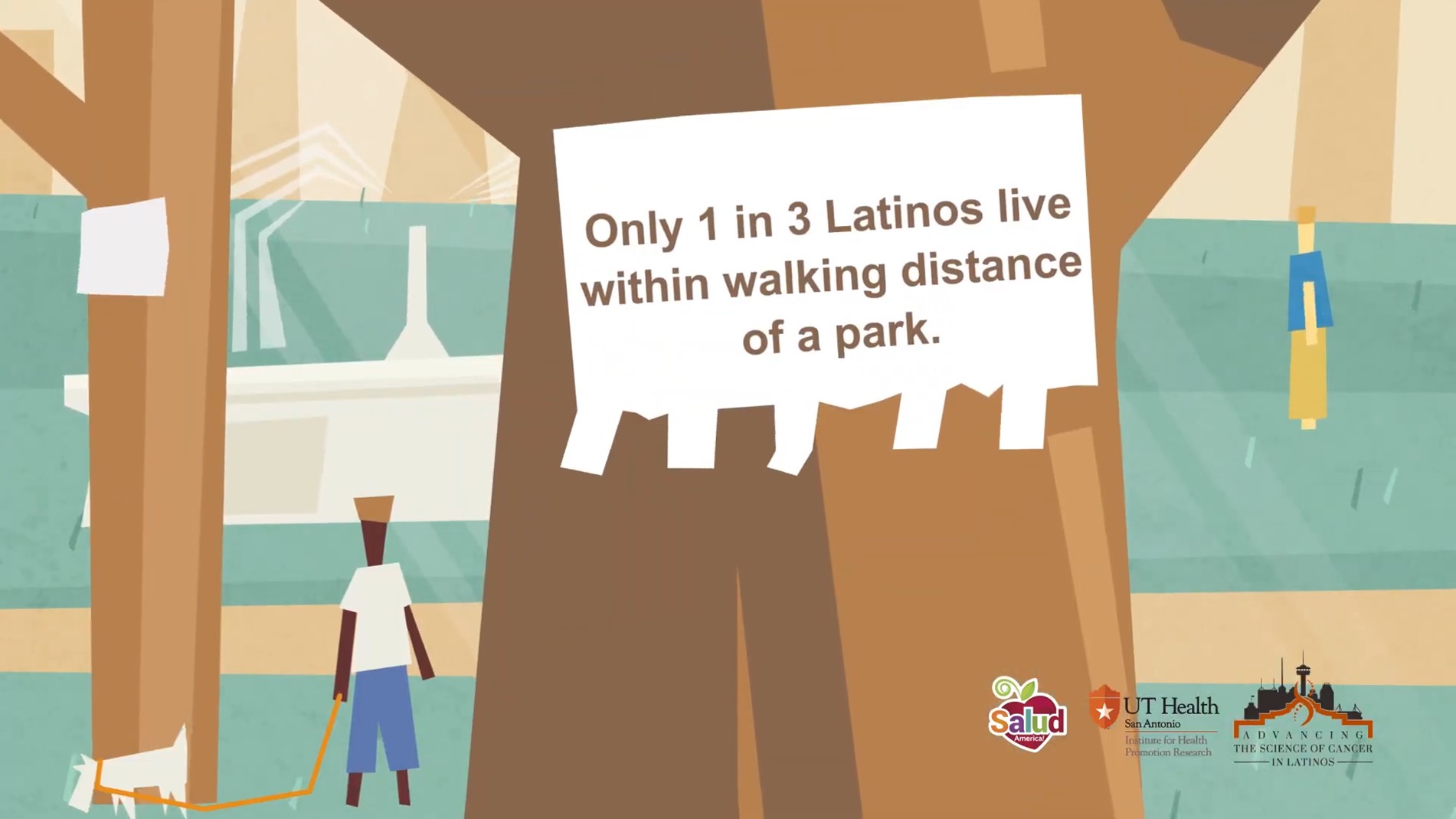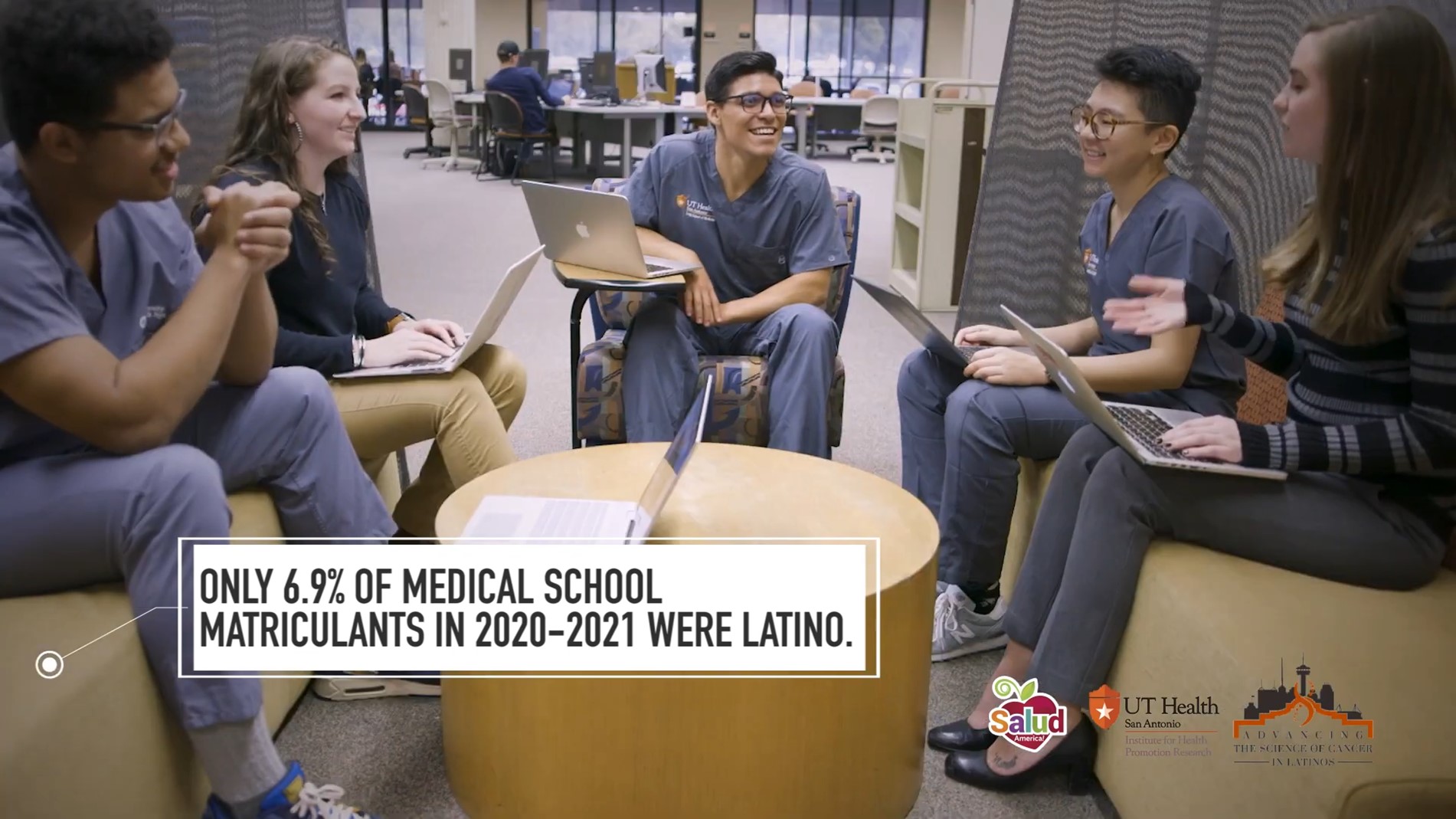Share On Social!
Latinos are a dynamic, diverse, rising population.
But cancer threatens the future health of the U.S. Latino population.
This is why our Salud America! team at the Institute for Health Promotion Research (IHPR) at UT Health San Antonio created a new video, “Latino Cancer: ¿Sabía Usted? (Did You Know?),” to describe the state of Latino cancer disparities and highlight the inequities behind them.
The video debuted at the 2022 Advancing the Science of Cancer in Latinos conference.
“The conference helped focus on a key underlying issue – health equity. Health equity is where everyone has a fair, just opportunity to be their healthiest,” said Dr. Amelie G. Ramirez, leader of the conference and director of Salud America! and the IHPR. “True change starts when we focus on solving ‘upstream’ systemic/structural factors and not just focus on mending ‘downstream’ symptoms or outcomes.”
Latino Cancer Disparities
¿Sabía Usted?
Cancer is the #1 cause of death for Latinos.
Latino cancer cases are expected to rise 142% in coming years.
Latinos suffer 2x higher rates of liver and stomach cancers than white people.
 Only 66% of prostate cancers in Latino men are diagnosed at a local stage (vs. 72% in white people).
Only 66% of prostate cancers in Latino men are diagnosed at a local stage (vs. 72% in white people).
Latinas are 40% more likely to be diagnosed with cervical cancer than white women.
Only 59% of breast cancers in Latinas are diagnosed at a local stage (vs. 67% in white people).
Fewer Latinas have mammogram screening for breast cancer (61%) than their white peers (65%).
Latinos are less than 10% in NCI clinical trials. They are less than 4% in FDA drug trials.
Latino Health Inequities
¿Sabía Usted?
Latino cancer health disparities are driven by structural inequities that have been built into governmental laws, economic policies, school systems, neighborhoods, businesses, research, and healthcare.
1 in 3 U.S. Latino families live in poverty.
15.1% of Latinos have no health coverage, highest among racial/ethnic groups.
Latinos who are “housing-cost burdened” rose from 42.4% to 56.9% recently.
Latino neighborhoods have 1/3 as many supermarkets as non-Latino ones.
 Only 1 in 3 Latinos live within walking distance of a park.
Only 1 in 3 Latinos live within walking distance of a park.
27% of Latinos rely on public transit daily/weekly (vs. 14% of white people).
44% of Latinos live with poor air quality.
42% of kids live in “childcare deserts.” Only 40% of Latinos participate in preschool.
78% of Latino kids suffer at least one adverse childhood experience (ACE), such as poverty, abuse, neglect. 28% suffer 4+ ACEs.
Anti-immigrant rhetoric, implicit and explicit bias, lack of social cohesion … all harm Latino health.
Latinos are dying from COVID-19 at 2x the rate of their peers.
Compared with other major racial/ethnic groups, Latinos have among the highest rates of important potentially modifiable cancer risk factors, including obesity and type 2 diabetes.
Lack of Latino Representation in Healthcare, Research, Leadership
When Latino patients are admitted to a hospital, they encounter few Latino healthcare professionals. The pipeline of Latino healthcare workers does not reflect national population demographics.
¿Sabía Usted?
 Only 5.7% of nurses are Latino. 73.5% are white.
Only 5.7% of nurses are Latino. 73.5% are white.
6.3% of physicians are Latino. 67% are white.
Only 6.9% of medical school matriculants in 2020-2021 were Latino.
Latinos comprise 2% of hospital leadership and 4% of medical school leadership.
What Can We Do about Latino Cancer?
We need researchers, physicians, healthcare professionals, patient advocates, and students from across the nation to unite to create research advancements, change systems, and take action to address health inequities and their resulting cancer disparities.
We must:
- ensure the voices of people of color are shaping cancer research
- account for changing U.S. demographics and Latino heterogeneity in data collection and analyses
- highlight biomarkers and factors associated with cancer in Latinos
- provide culturally and linguistically competent care that addresses social needs for every patient
- use tools to ensure we are free from the implicit bias that has systemically prevented Latinos from receiving equitable care and treatment in the past
- utilize social media and other technology to reach Latinos with messages or prevention and enhance the recruitment and retention of Latinos into potentially life-saving clinical trials where they are currently often absent (i.e., Salud America! work that uplifts open clinical trials and the stories of Latino clinical trial participants as peer role models)
- understand and support the Latino cancer survivorship journey (i.e., Ramirez’s Avanzando Caminos clinical trial, which unites Mays Cancer Center and the Sylvester Comprehensive Cancer Center to enroll 1,500 Latino cancer survivors in South Texas and 1,500 Latino cancer survivors in Miami to help unpack the social, cultural, behavioral, mental, biological, and medical influences on post-cancer life
- diversify the field of science, healthcare, and leadership (i.e., Ramirez’s Éxito! Latino Cancer Research Leadership Training program at UT Health San Antonio, which annually recruits 25 Latino students and health professionals annually for a culturally tailored curriculum to promote pursuit of a doctoral degree and cancer research career)
“The U.S. Latino population will continue to rise,” Ramirez said. “This demands diversity, inclusion, and equity, and addressing social needs and training, to ensure the collective national wellbeing into the future.”
¡Ahora, ya saben!
By The Numbers
142
Percent
Expected rise in Latino cancer cases in coming years



